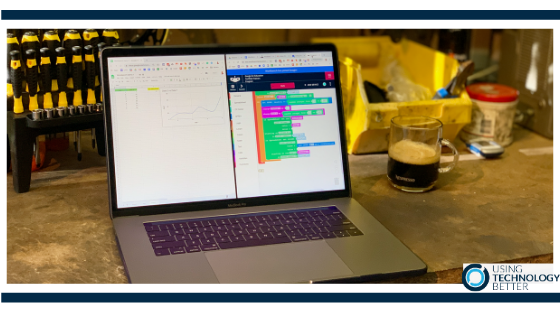This is the fourth blog in the series on using Workbench. In this blog, we look at using the programming canvass to read and write multiple sets of data to a spreadsheet by incorporating a conditional loop.
[bctt tweet=”This blog post will show you how to read and write data using a conditional loop from a spreadsheet using the programming canvass in Workbench #googleedu #workbenchedu” username=”adifrancis”]
Because we can read and write data via code, we are also able to collect data from external devices like a micro:bit. By using loops we can collect multiple sets of data, making this a powerful tool in the classroom.
In this 11:23 minute video, you will learn how to write code using blocks in the programming canvas to read and write sets of data from a spreadsheet using loops. Click to watch the video.
Have you missed the other blogs in this series? Don’t panic! To access the blogs:
Want to learn more? Then keep an eye out for the next blog where we add a touch more functionality and draw charts which can be used to represent real-time data.











